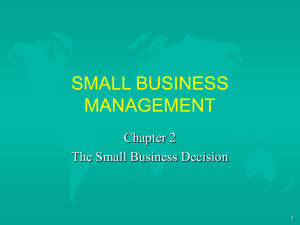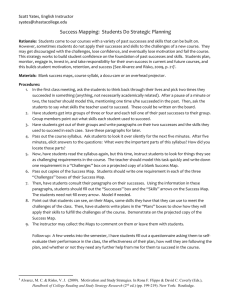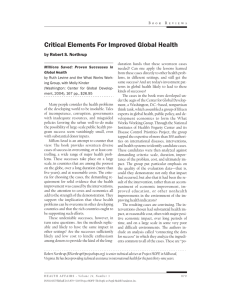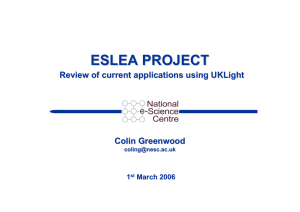Document 11871735
advertisement
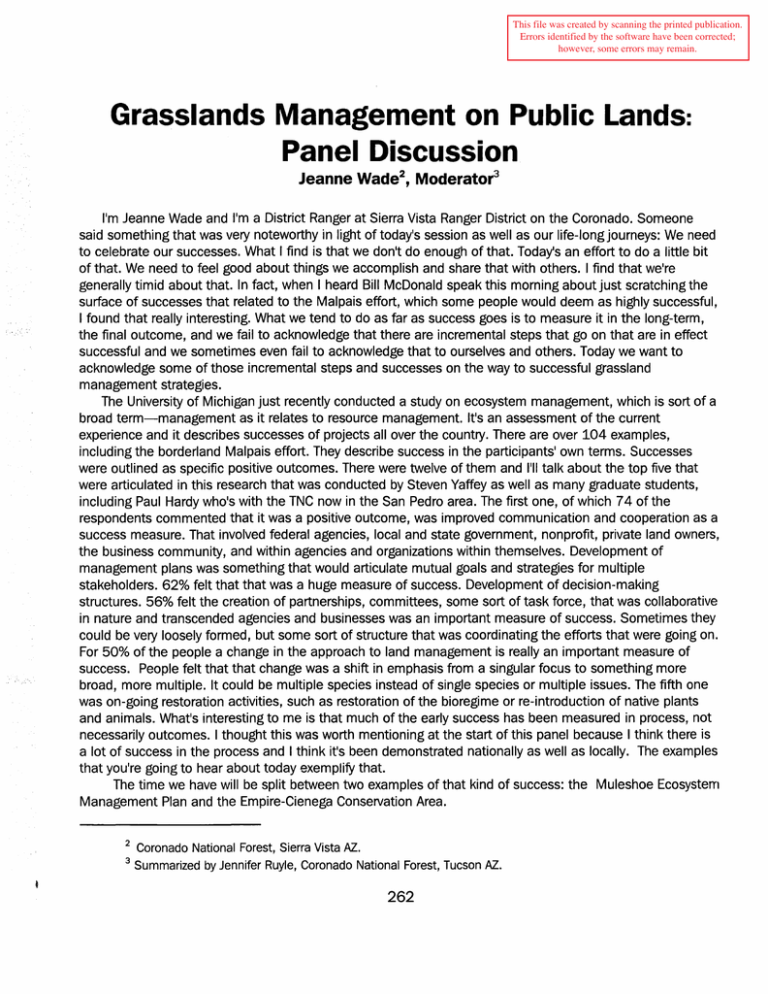
This file was created by scanning the printed publication. Errors identified by the software have been corrected; however, some errors may remain. Grasslands Management on Public Lands: Panel Discussion Jeanne Wade 2 , Moderator3 1•m Jeanne Wade and 1•m a District Ranger at Sierra Vista Ranger District on the Coronado. Someone said something that was very noteworthy in light of today•s session as well as our life-long journeys: We need to celebrate our successes. What I find is that we don't do enough of that. Today•s an effort to do a little bit of that. We need to feel good about things we accomplish and share that with others. I find that we•re generally timid about that. In fact, when I heard Bill McDonald speak this morning about just scratching the surface of successes that related to the Malpais effort, which some people would deem as highly successful, I found that really interesting. What we tend to do as far as success goes is to measure it in the long-term, the final outcome, and we fail to acknowledge that there are incremental steps that go on that are in effect successful and we sometimes even fail to acknowledge that to ourselves and others. Today we want to acknowledge some of those incremental steps and successes on the way to successful grassland management strategies. The University of Michigan just recently conducted a study on ecosystem management, which is sort of a broad term-management as it relates to resource management. It's an assessment of the current experience and it describes successes of projects all over the country. There are over 104 examples, including the borderland Mal pais effort. They describe success in the participants• own terms. Successes were outlined as specific positive outcomes. There were twelve of them and 1•11 talk about the top five that were articulated in this research that was conducted by Steven Yaffey as well as many graduate students, including Paul Hardy who•s with the TNC now in the San Pedro area. The first one, of which 7 4 of the respondents commented that it was a positive outcome, was improved communication and cooperation as a success measure. That involved federal agencies, local and state government, nonprofit, private land owners, the business community, and within agencies and organizations within themselves. Development of management plans was something that would articulate mutual goals and strategies for multiple stakeholders. 62% felt that that was a huge measure of success. Development of decision-making structures. 56% felt the creation of partnerships, committees, some sort of task force, that was collaborative in nature and transcended agencies and businesses was an important measure of success. Sometimes they could be very loosely formed, but some sort of structure that was coordinating the efforts that were going on. For 50% of the people a change in the approach to land management is really an important measure of success. People felt that that change was a shift in emphasis from a singular focus to something more broad, more multiple. It could be multiple species instead of single species or multiple issues. The fifth one was on-going restoration activities, such as restoration of the bioregime or re-introduction of native plants and animals. What's interesting to me is that much of the early success has been measured in process, not necessarily outcomes. I thought this was worth mentioning at the start of this panel because I think there is a lot of success in the process and I think it's been demonstrated nationally as well as locally. The examples that you•re going to hear about today exemplifY that. The time we have will be split between two examples of that kind of success: the Muleshoe Ecosystem Management Plan and the Empire-Cienega Conservation Area. 2 Coronado National Forest, Sierra Vista AZ. 3 Summarized by Jennifer Ruyle, Coronado National Forest, Tucson AZ. 262




